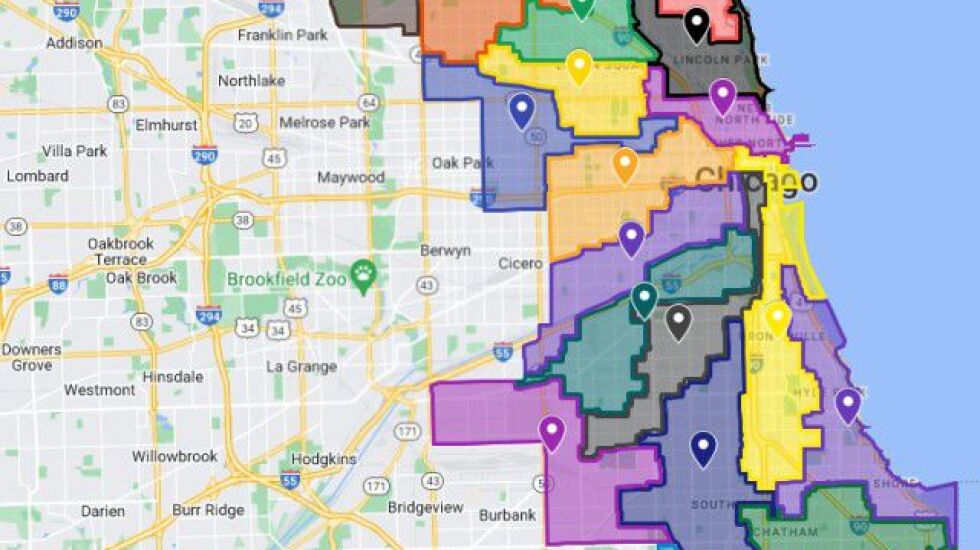
State lawmakers are out with yet another proposed map of voting districts for Chicago’s first elected school board slated for November 2024 — and they’re hoping it will be passed by legislators who will gather in Springfield next week for the end of a fall veto session.
The new map, released late Tuesday, aims to satisfy advocates who want a map that reflects a voting population that reflects the minority-majority school district. The new map has fewer majority-white districts than previous maps and more districts where Latino Chicagoans are either the majority or a plurality.
Illinois Sen. Robert Martwick, the vice chairman of the Senate Special Committee on the Chicago Elected Representative School Board, said he anticipates a hearing on the new map next week and votes in the Senate and the House before the veto session ends on Nov 9. The final map also requires the governor’s signature.
The deadline to approve a map is April 1, but lawmakers have said they would like to get it in place sooner so potential school board candidates can begin planning. Next November, 10 members of the 21-member board will be elected from geographic districts to start serving in January 2025. The rest of the board will be elected in 2026, with the president elected at large.

Martwick, a Democrat whose district covers parts of Chicago and the northwest suburbs, said this map was produced by map-making consultants who took feedback from the public and lawmakers, and also made sure each district would have about the same population so it would comply with the Voting Rights Act. Each proposed district would have about 137,000 residents.
The House Democratic CPS Districting Working Group appears to be on board with this map.
“This latest map is the product of hundreds of hours of discussions and significant input from stakeholders across our Chicago communities,” state Rep. Ann Williams, a Chicago Democrat, said in a statement. Williams leads the House committee.
The Legislature originally was supposed to settle on a map by June 1. But their first versions garnered pushback from community members and parents, mostly because of concerns the school board chosen based on that map would not reflect the racial makeup of students in the school district.
The city’s population is 33% white, 29% Black and 29% Latino, according to the U.S. Census. The school district’s student population is 47% Latino, 35% Black, 11.1% white and 4.5% Asian.
The new 20-district map includes five districts where the majority of voting-age adults are white, seven that are majority Black and six that are majority Latino. The two other districts have no majority, but they have a plurality of white voters.
Still, some groups already are saying this new map does not do enough to ensure the board will represent the school district’s students.
Dan Anello, president of Kids First Chicago, an organization that has held focus groups with parents and worked with them to advocate for a representative map, said he is disappointed.
“I think it is kind of unfortunate that we haven’t gotten there yet,” Anello said. “So I am worried that they’re not hearing what people are asking for and we’re going to be handed something that is going to do more harm than good.”
Anello points out the two districts that have no majority could be dominated by white voters because some Latino adults are undocumented and can’t vote. This would essentially make white voters the largest voting group in seven districts, he said.
Anello said the majority of voters — not just parents — in a poll commissioned by his group want the elected school board map to be drawn in a way that creates a likelihood the board will reflect the racial makeup of students.
The map is not the only outstanding question for the Legislature related to the elected school board. It also must decide how it is going to deal with having two elections — one that only covers 10 voting districts and a second one covering all 20. The Legislature could either combine districts for 2024 so everyone is eligible to vote, or it could have voting in half the districts in 2024 and then the rest in 2026.
In addition, Martwick has a bill pending to allow board members to be paid. He said there are also some issues around conflict of interest that need to be clarified.
Sarah Karp covers education for WBEZ.







